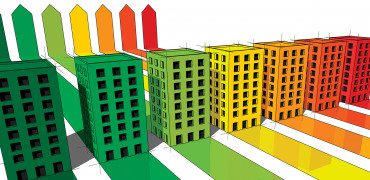The media is dominated with how to be "Lean". In fact I don’t seem to be able to scroll through my device without someone doing some kind of a HIIT workout, or cooking a meal without carbohydrates. I know this isn’t a coincidence and the algorithms match to my profile, and I also know Shepherd’s Pie is just mincemeat and peas without the mashed potato….but being "Lean" seems to be the big thing now.
For instance, The Lean Machines™ are two fitness fanatics who have risen to fame via the phenomenon that is YouTube™. They have over 300 thousand subscribers, and as a result work with many leading chefs and fitness gurus around the world, collaborating to enhance their brand and status. Also let’s not forget the nation’s favourite body coach Joe Wickes and his Lean in 15™ brand. Joe’s nationwide success is down to developing 15 minutes meals, with workouts to build a strong lean body.
Don’t get me wrong, working out isn’t everyone’s cup of tea, but "Lean" doesn’t just apply to getting fitter; it applies to businesses as well...
Lean Six Sigma
Lean Six Sigma is something which I am very passionate about, and was born from two very different yet distinct companies.
The development of Lean is derived from the Toyota Production System, which originated in Japan after the Second World War. Lean developed to be a set of principles, practices, tools and techniques focused on reducing waste, coordinating workflows and handling variability.
Six Sigma on the other hand, was developed by Motorola in 1986. This coincided with the Japanese price bubble between 1986 to 1991 and Jack Welsh made it central to his business strategy at General Electric in 1995.
Six Sigma is a statistical tool which seeks to reduce the defects within a process to as close to zero as possible, so in short, Lean eliminates waste, and Sigma reduces variation.
The two principals are so closely linked and complimentary to one another, that over the following years, the two now go hand in hand, and the term Lean Sigma is something now widely used in businesses around the world.
One of the Lean tools used in many places of work, is called the 5s Rule. 5s is the name of a workplace organisation method that uses a list of five Japanese words: seiri, seiton, seiso, seiketsu, and shitsuke. ... And to translate, this is to Sort, Straighten & Set, Shine & Sweep, Standardise and Sustain.
But what does this actually mean?
For instance, how can we Sort our office space? We could get rid of waste like boxes, unused equipment and cables and clutter from desks.
We could Straighten & Set by arranging all necessary items so that they can be easily selected for use. This can then prevent loss and waste of time by arranging your work station in such a way that all tooling / equipment is in close proximity. Making it easy to find and pick up necessary items.
To Shine & Sweep is to keep your work space clean and tidy. This could mean setting a daily routine, or setting a cleaning frequency for the team. Keeping work spaces clean and tidy, also leads to a safe place to work, and a more pleasing place to work.
To Standardise means everything has its place – and is in its right place. If people know where to find office supplies or a manual or a piece of equipment, there is no time wasted asking people where to find it, or wandering around if people are unavailable.
To Sustain means to maintain. Once you have a clean, tidy and efficient workplace, you really want it to stay like that, so coming up with a plan to maintain it, would be a good idea.
Lean Six Sigma is something which I am very passionate about
Can you help your organisation be part of its own lean machine by using 5s?
The 5s rule is one of the easiest Lean tools, but the wider approach to 5s could mean your work space helping you to de-clutter the mind also. Research shows that having less clutter and waste around us, leads to more productive activities, a more productive state of mind, and more of a will to want to keep it like that.
Getting deeper than that, Oscar Newman, architect, city planner and creator of the theory ‘defensible space’ wrote Creating Defensible Space in the 1972. Newman’s theory encompasses ideas about crime prevention and neighbourhood, in that a safe living environment is safe because of those who care for it. According to the theory, housing developments that evoke territorialism are “the strongest deterrents to criminal and vandal activity.”
Today, some of Newman’s ideas are still taken into consideration, and all contemporary approaches of the relationships between crime and house design use Newman’s theory as a critical point of reference. United States Department of Housing and Urban Development, cited “as both a criminological concept and a proven strategy for enhancing our Nations quality of life”.
Further to this theory, we can look a stage deeper into Lean and think more about the world we live and the buildings we inhabit. Mitsubishi Electric started to incorporate Lean from an energy saving perspective with our products many years ago, when we made the transition from fixed speed technology to inverter driven and now, power inverter driven systems. The result is being able to offer a system that helps save energy, and is more cost effective.
The drive for inverter led technology changed the landscape of the way we do business, to incorporate our responsibility to help reduce CO2 emissions and meet Government targets, and for us as a business to do the right thing for our environment and the world we live in. This rationale was cemented by our Green Gateway document and uses the Lean, Mean, Green approach, to drive conversations about reducing the need for energy consumption, using energy as efficiently as possible and supplying energy from zero or low carbon technologies.
A final thought
The subject of Lean is vast and deeply rooted in many peoples core values….whether they know it or not. It could be a 15 minute healthy meal, de-cluttering your workspace using the 5s rule, caring for the community you live in by keeping it clean and tidy, or being responsible and buying energy saving equipment.
The point is, with simple changes, Lean can be transformational.
Let’s be honest though, there really is no substitute for a good old fashioned plate of fish and chips. Sorry Joe!
Emma Gold is Customer Service & Operations Manager at Mitsubishi Electric
If you have any questions about this article, you can contact us via email. Or if you would like to tweet us, please follow our MEUK_LES twitter page.
We upload new articles every week so remember to check back regularly.
You can also sign up for our monthly newsletter below.



